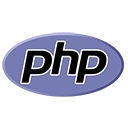Debugging PHP code is a fundamental skill for web developers. In this guide, we'll provide an in-depth overview of how to debug PHP code effectively, covering various techniques, tools, and best practices. Understanding debugging is crucial for identifying and fixing issues in your PHP applications.
1. Introduction to Debugging
Let's start by understanding the concept of debugging and its significance in web development.
2. Debugging Techniques
Explore various debugging techniques, including:
- Printing and Logging
- Using Built-in Functions
- Setting Breakpoints
- Interactive Debugging
3. Using var_dump() and print_r()
Learn how to use
var_dump()print_r() $data = [1, 2, 3];
var_dump($data);
4. Error Reporting and Logging
Configure error reporting and logging to capture and review errors and warnings in your PHP code.
error_reporting(E_ALL);
ini_set('log_errors', 1);
ini_set('error_log', 'error.log');
5. Using Xdebug
Explore the installation and usage of Xdebug, a powerful PHP extension for debugging.
6. Interactive Debugging with IDEs
Learn how to set up and use integrated development environments (IDEs) for interactive debugging.
7. Best Practices and Troubleshooting
Explore best practices for effective debugging and troubleshooting common issues in PHP applications.
8. Conclusion
You've now gained an in-depth understanding of how to debug PHP code, a crucial skill for maintaining and enhancing the reliability of your web applications. Proper debugging techniques save time and frustration during development.
To become proficient in debugging, practice, experiment, and apply your knowledge to real PHP projects.

